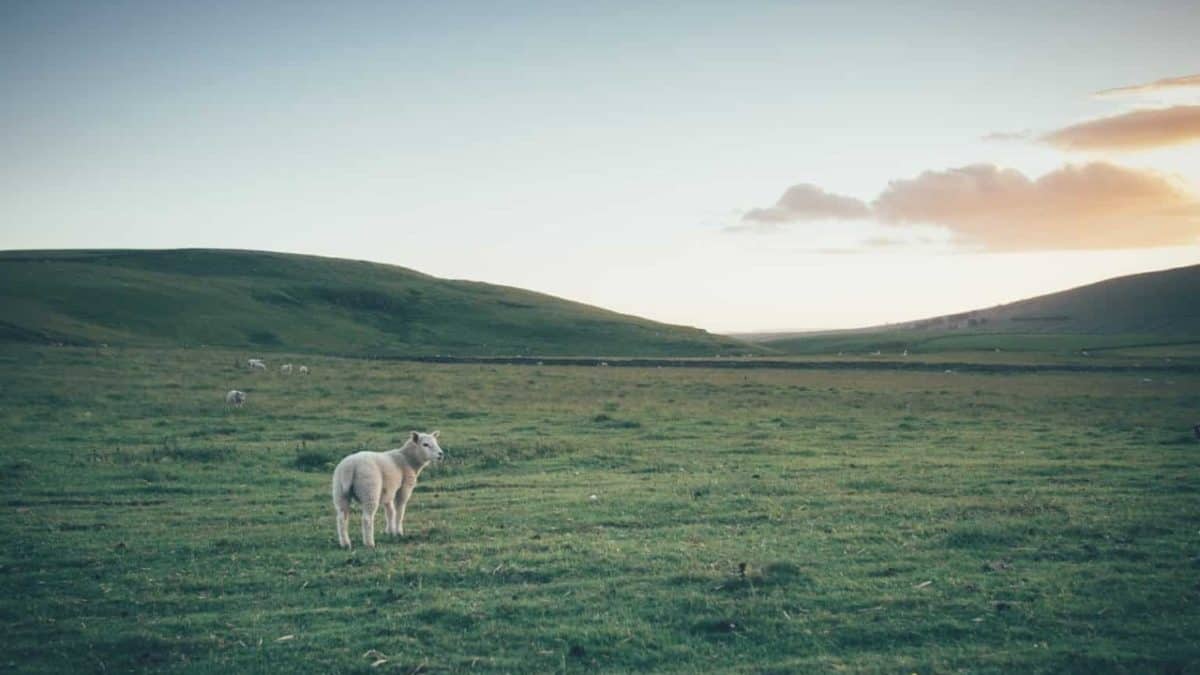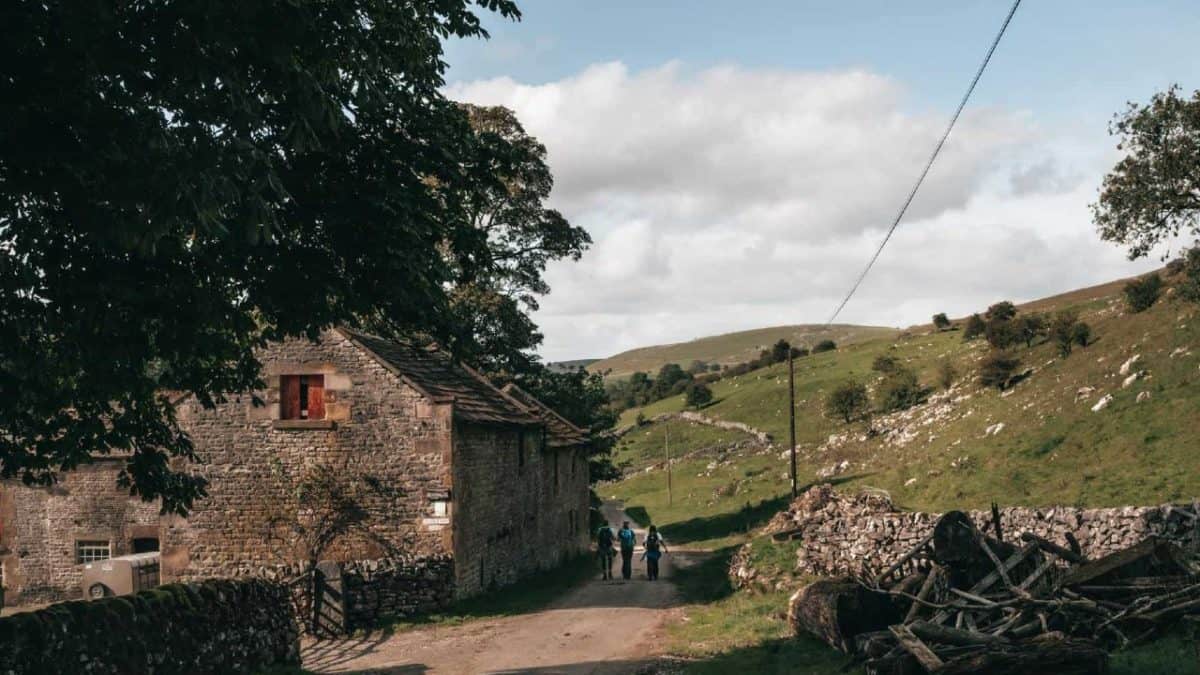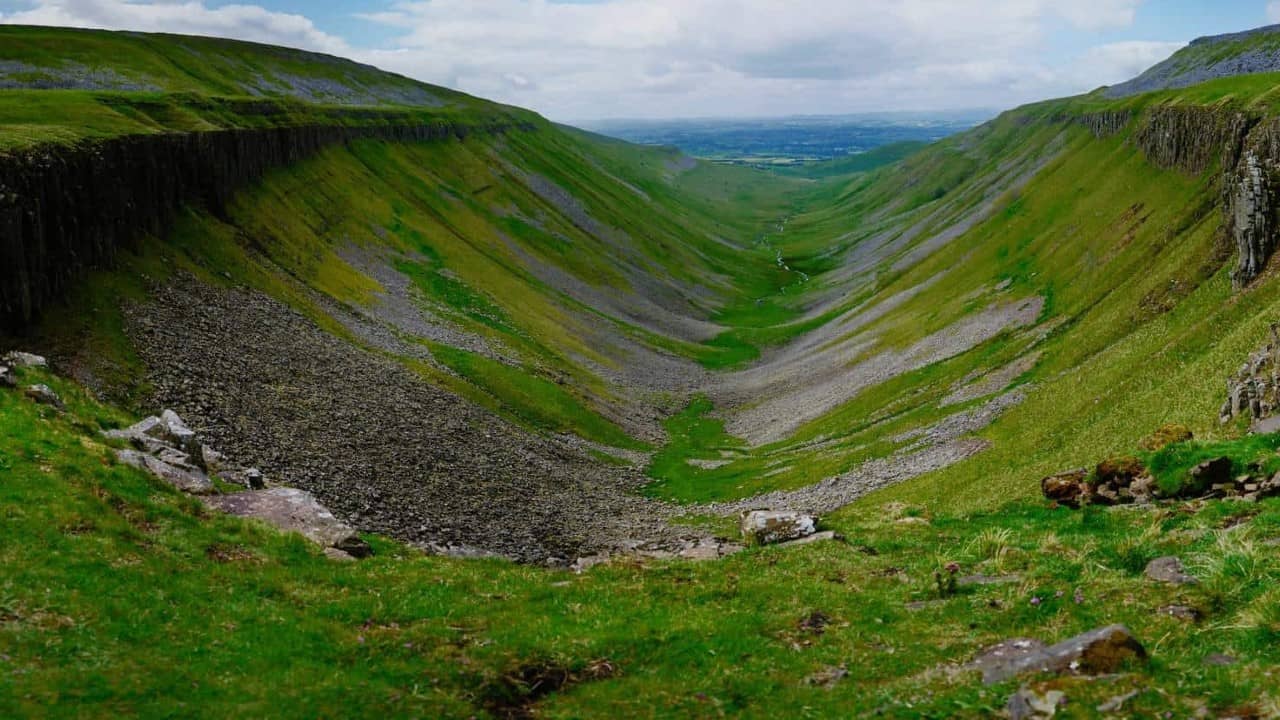Planning such a big and demanding adventure can be hard work. To make it a bit easier for you, we’ve put together a guide to this magnificent trail.
Best Time to Walk the Pennine Way

As far as the weather goes, September and May are the best months to walk the Pennine Way. It takes about two weeks to complete the entire trail. However, many hikers choose to take it slow and complete the hike in three weeks in order to fully encompass the beauty of the trail.
If you plan to start your adventure in September, ideally, you want to complete it by early October, before the weather gets worse.
It’s best to avoid the Pennine Way between late October and early April—unless you have extensive experience hiking through harsh winter conditions, of course.
While the weather conditions improve in April, there is still the risk of snow, especially along the northern sections of the trail.
June, July, and August are popular months to hike the Pennine Way. However, the trail can get very busy during summer, and you may have a hard time finding good accommodation.
The sun can be unforgiving this time of year, so you’ll need to carry a lot of water.
If you decide to walk the Pennine Way between May and September, you will still need to be prepared for heavy rain as well as the hot sun.
Even in summer, you may experience freezing temperatures on the summits. Bring a waterproof rain jacket or a poncho and make sure to check the forecast daily. Check out our post on when to walk the Pennine Way for more information.
Planning Your Itinerary

If you plan to complete the Pennine Way in three weeks, you can divide it into 20 stages:
- 1st Stage: Edale to Crowden
- 2nd Stage: Crowden to Standedge
- 3rd Stage: Standedge to Hebden Bridge
- 4th Stage: Hebden Bridge to Ponden
- 5th Stage: Ponden to Thornton-in-Craven
- 6th Stage: Thornton-in-Craven to Malham
- 7th Stage: Malham to Horton-in-Ribblesdale
- 8th Stage: Horton-in-Ribblesdale to Hawes
- 9th Stage: Hawes to Keld
- 10th Stage: Keld to Bowes
- 11th Stage: Bowes to Langdon Beck
- 12th Stage: Langdon Beck to Dufton
- 13th Stage: Dufton to Garrigill
- 14th Stage: Garrigill to Slaggyford
- 15th Stage: Slaggyford to Greenhead
- 16th Stage: Greenhead to Once Brewed
- 17th Stage: Once Brewed to Bellingham
- 18th Stage: Bellingham to Byrness
- 19th Stage-: Byrness to Windy Gyle
- 20th Stage: Windy Gyle to Kirk Yetholm

If you choose this itinerary, you will hike between 10 to 15 miles each day. You may want to squeeze in one or two rest days into your itinerary if you plan on hiking the trail all in one go. The main recommendations are:
- Malham — A small, but popular village in the Pennies.
- Horton-in-Ribblesdale — This is a great base for exploring the Three Peaks of Yorkshire.
- Hawes—this small market town is home to a few lovely waterfalls and the Dales Countryside Museum.
- Bowes—A lovely village that’s built around the medieval Bowes Castle and situated close to Barnard Castle.
- Greenhead—Greenhead is the perfect place for exploring Hadrian’s Wall, an ancient defensive fortification built by the Romans. The village is also home to the Roman Army Museum.
Accommodation

It’s best to book accommodation in advance. You can find a list of accommodation options for each section of the Pennine Way on the official website of the National Trails.
There are a few places along the trail where it can be difficult to find accommodation.
Unfortunately, one of those places is where you are supposed to spend your first night on the trail—Crowden. When you complete the first section, you can either camp at the Crowden campsite or stay at the Old House B&B.
Alternatively, you can stay in one of the villages and towns nearby. If you are unable to find accommodation in Crowden, you can use a local taxi service to get to Glossop. Some B&Bs may be willing to pick you up, so be sure to make a few calls.
Accommodation options at Ponden and Knarsdale are also limited. At Thornton-in-Craven, there are no shops or pubs. However, you will find some in nearby Earby.
Camping and Wild Camping on the Pennine Way
If just walking the trail isn’t hardcore enough for you, camping is also an option. There are plenty of campsites along the Pennine Way. Many pubs and farms also offer camping.
Facilities at campgrounds vary greatly between different locations, so make sure to bring all the camping gear you need. There’s no need to book accommodation if you opt to camp.
Wild camping is permitted in England only with the landowner’s permission. The thing is, every piece of land in England is owned by some organization or individual.
Along the Pennine Way, most of the landowners allow hikers to camp on their property. But, obtaining permission to pitch a tent and camp on someone’s land is often impractical.
Luckily, there’s sort of a tacit compromise between campers and landowners along the Pennine Way—you can set up a wild camp without formal permission provided that you:
- Pitch late
- Leave no trace of your camp
- Camp as unobtrusively as possible
- Pack out or bury your waste
- Don’t make open fires
- Camp out of sight of nearby buildings
- Don’t camp next to gates
- Camp in small groups
- Leave early
If you set up camp on someone’s property without asking their permission and they see you, they probably won’t chase you away. The locals are very friendly and accommodating. However, you must comply if someone asks you to get off their property.
Avoid camping in Kinder Scout. This area faces higher wildlife risk during summers, so the local rangers really don’t like seeing campers here.
You’ll be able to set up camp practically wherever you want when you get to Scotland, without having to ask anyone for permission, thanks to the Scottish Outdoor Access Code. But you’ll still need to abide by some rules.
What to Bring

Unless you plan to hire a baggage carrying service, bring a lightweight backpack and pack light. If your backpack is not completely waterproof, make sure to buy a rain cover for it.
Pack spare warm layers and waterproofs. Don’t wear denim jeans and base layers that are made from cotton. Instead, opt for quick-drying and moisture-wicking fabrics such as nylon or merino wool. You will also need robust hiking shoes.
On top of a first aid kit, you should carry a survival bag, torch, whistle, and spare rations. Instead of buying a pre-made first-aid kit, you can make one yourself.
It’s a good idea to bring a water filtration system in case you run out of clean water. Read my post on the best backpacking water filters. For more details, check out our packing list for the Pennine Way.
Don’t rely on your smartphone for navigation because the cell reception along the trail is patchy at best. Bring a GPS device and a compass. In addition to navigation gear, you should also bring paper maps and a guidebook.
The official Pennine Way National Trail Guide (published by Aurum Press) contains Ordnance Survey maps of the area surrounding the Pennine Way as well as a lot of other useful information.
Wainwright’s Pennine Way Companion is a fascinating read, but it’s not ideal for navigation.

I love hiking, backpacking, and camping. From the Camino de Santiago to the West Highland Way in Scotland or simply a great day hike on the weekend. Hiking refreshes me, my mind, and keeps my body reasonably fit. So far I have walked three Camino routes and many other long distance hikes in the UK, Canada, and around the rest of Europe. One of the best was my hike up Ben Nevis.

